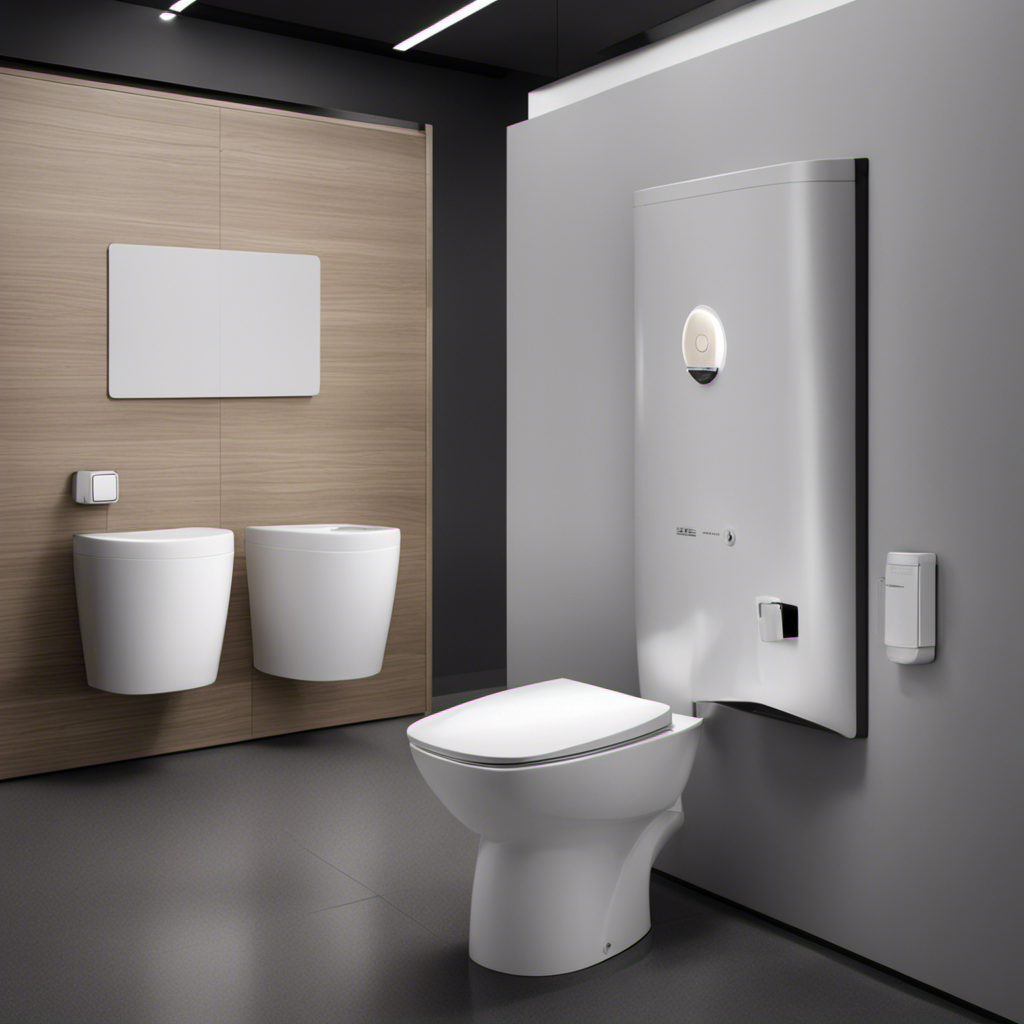We’ve all wondered at some point if a clogged toilet will overflow if we keep flushing it, right? The answer is, unfortunately, yes, it will.
Understanding the mechanics behind a clogged toilet is crucial to preventing messy disasters. In this article, we’ll delve into the factors that contribute to toilet overflow and provide practical tips on how to prevent it.
So, if you desire mastery in handling clogged toilet situations, keep reading!
Key Takeaways
- A clogged toilet restricts water flow and can potentially overflow.
- Continuously flushing a clogged toilet can cause leaks, burst pipes, and sewage backup.
- Understanding common causes of clogs, such as excessive toilet paper usage and flushing non-flushable items, can help prevent toilet overflow.
- Taking proactive measures and proper maintenance can minimize the risk of a clogged toilet and subsequent overflow.
Understanding the Mechanics of a Clogged Toilet
To understand the mechanics of a clogged toilet, we need to delve into the effects of a blockage on the water flow within the plumbing system.
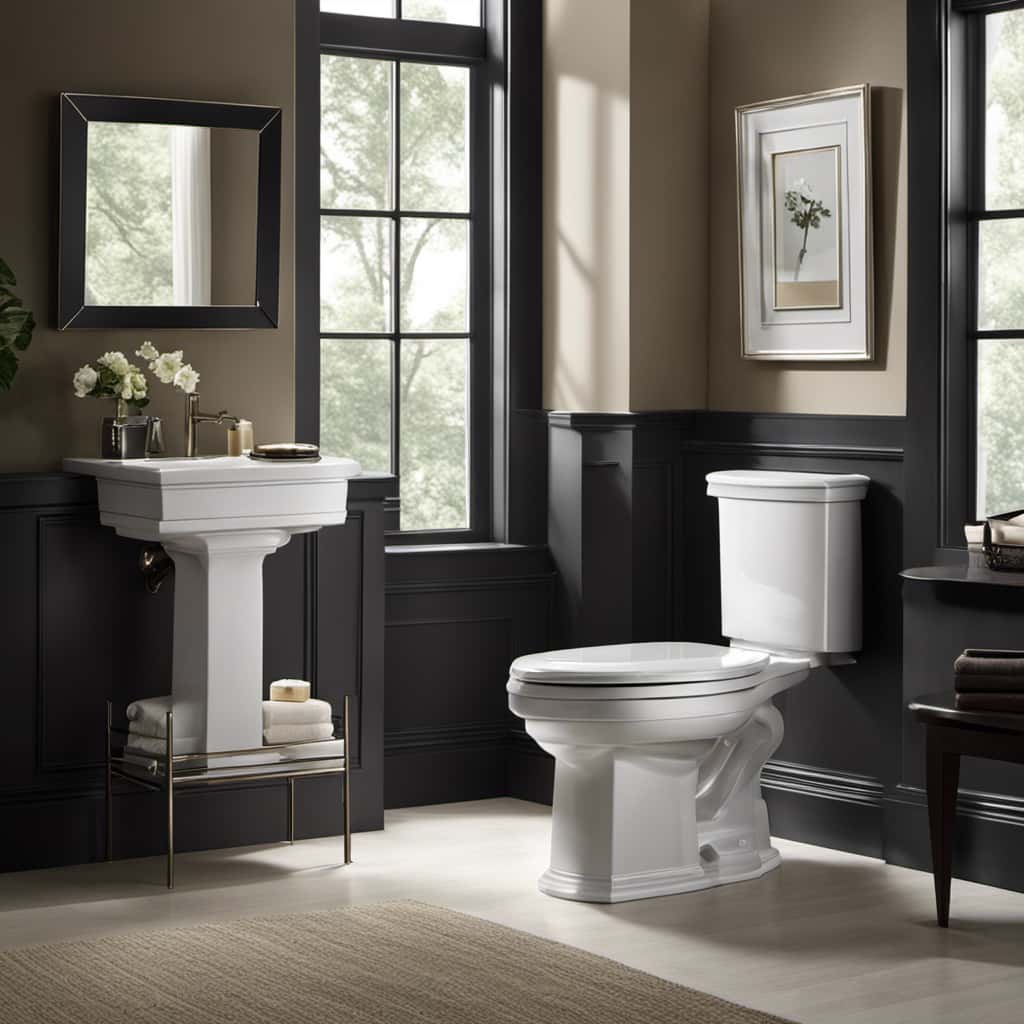
When a toilet becomes clogged, the potential causes can vary. Common culprits include excessive toilet paper, sanitary products, or foreign objects accidentally flushed down the drain.
It’s important to note that contrary to common misconceptions, flushing a clogged toilet multiple times won’t solve the problem. In fact, it can worsen the situation. A blockage restricts the water flow, causing it to back up and potentially overflow. Continuing to flush will only add more water to an already constrained system, leading to an eventual overflow.
Understanding the mechanics of a clogged toilet is crucial for troubleshooting and preventing further damage.
Factors That Contribute to Toilet Overflow
When a toilet becomes clogged, several factors can contribute to its potential overflow. Understanding these common causes can help prevent messy situations. One of the main causes is excessive toilet paper usage. When too much toilet paper is flushed at once, it can create a blockage in the pipes, causing the water to rise and potentially overflow.
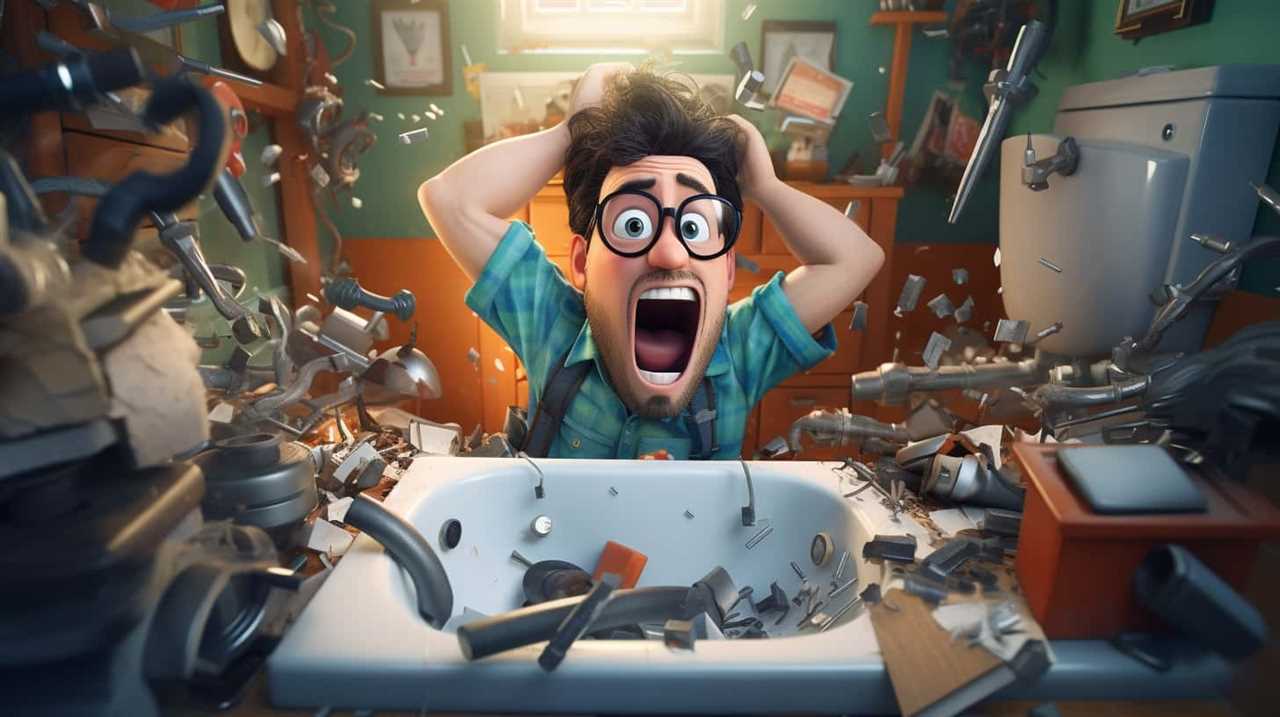
Another common cause is flushing non-flushable items, such as feminine hygiene products or baby wipes. These items don’t break down like toilet paper and can easily cause a clog. Signs and symptoms of an impending overflow include slow drainage, gurgling sounds, and water rising to the rim of the toilet bowl.
The Truth About Continuously Flushing a Clogged Toilet
We can avoid a messy overflow by refraining from continuously flushing a clogged toilet. When faced with a clog, it’s essential to understand the consequences and dangers of continuous flushing. Here are some key points to keep in mind:
- Increased water pressure: Flushing a clogged toilet repeatedly can lead to an increase in water pressure within the pipes. This heightened pressure can potentially cause leaks or even burst pipes, resulting in costly repairs.
- Risk of sewage backup: Continuous flushing can push the clog further down the drain, increasing the chances of a sewage backup. This backup can cause foul odors, unsanitary conditions, and damage to your plumbing system.
- Potential damage to the toilet: The forceful flushing can put excessive strain on the toilet’s components, such as the flapper, handle, and flush valve. This can lead to wear and tear, requiring repairs or replacement.
- Wasted water and higher bills: Continuously flushing a clogged toilet not only wastes water but also increases your water bills. It’s more cost-effective to address the clog properly rather than continuously flushing.
How to Prevent a Toilet Overflow
To prevent a toilet overflow, it’s important for us to take proactive measures and address a clog promptly. Toilet overflow prevention starts with understanding the common causes of clogs.
One common culprit is excessive toilet paper usage. Using too much toilet paper in a single flush can overwhelm the plumbing system and lead to a clog.
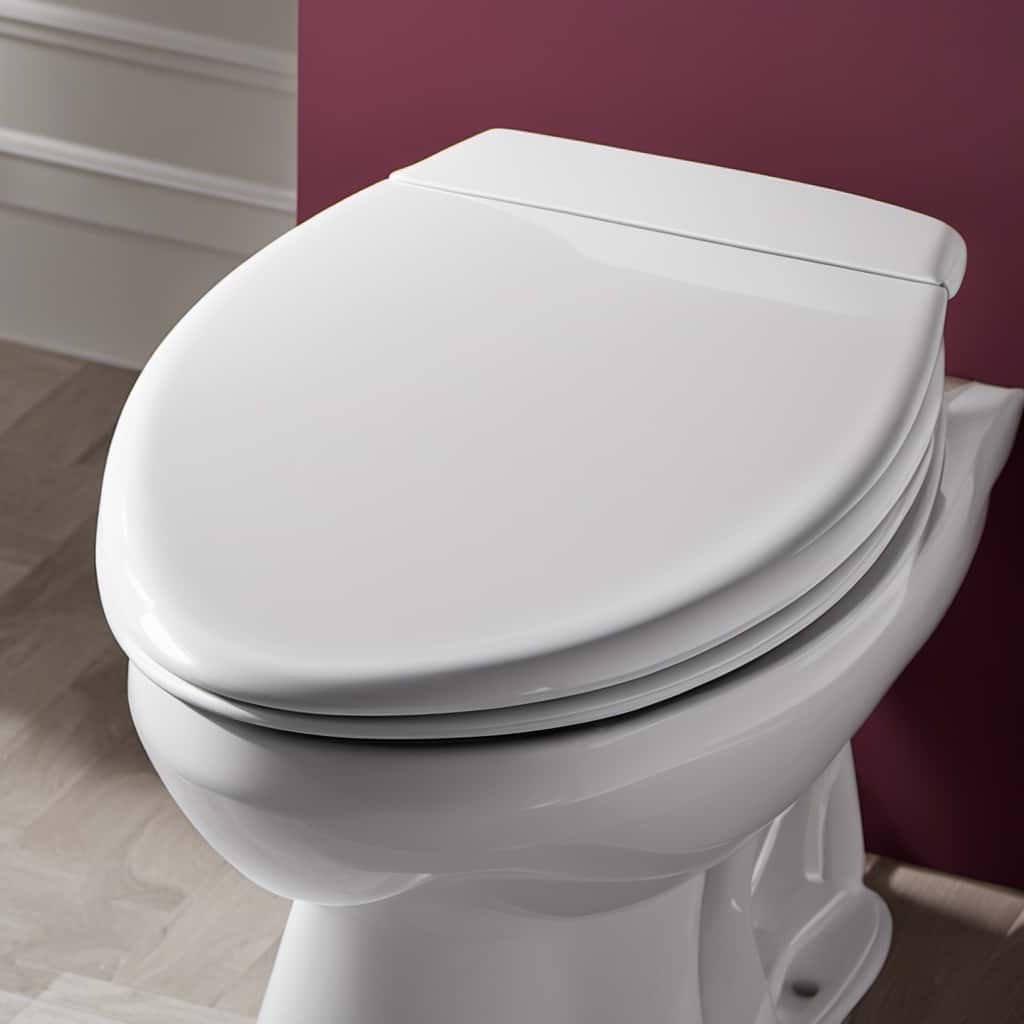
Another common cause is flushing items that shouldn’t be flushed, such as feminine hygiene products, baby wipes, or dental floss. These items can easily get stuck in the pipes and cause blockages.
Additionally, a lack of regular maintenance can contribute to clogs. By regularly cleaning the toilet and ensuring proper flushing, we can minimize the risk of clogs and potential overflows.
Taking these preventive measures can help us avoid the inconvenience and mess of a clogged toilet. Now, let’s explore the steps to take when facing a clogged toilet situation.
Steps to Take When Facing a Clogged Toilet Situation
Our first step in addressing a clogged toilet situation is to assess the severity of the blockage. Once we’ve determined the extent of the problem, we can take the necessary steps to unclog the toilet.
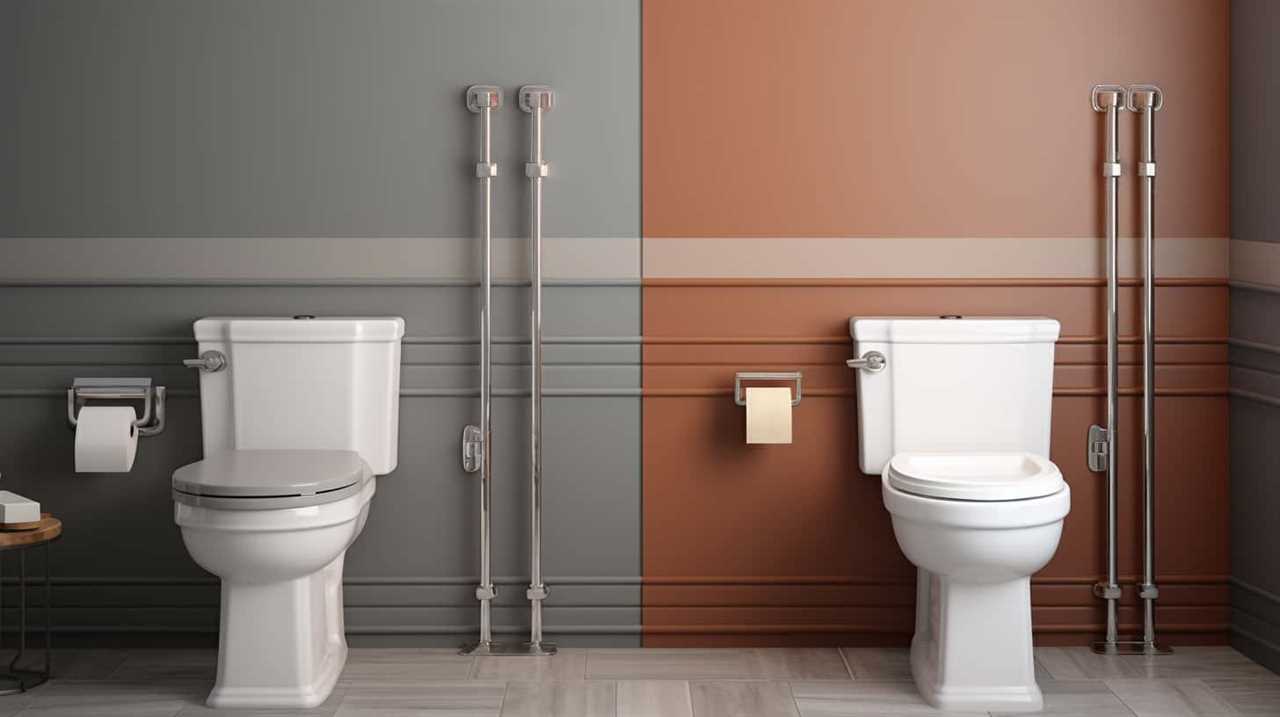
Here are some common causes of toilet clogs and the corresponding steps to resolve them:
- Excessive toilet paper: Use a plunger to create suction and dislodge the blockage. If that doesn’t work, try using a toilet auger to break up the clog.
- Foreign objects: If an object has been flushed down the toilet, use a plunger or toilet auger to try and remove it. If it can’t be reached, you may need to call a professional plumber.
- Hard water deposits: Use a toilet brush and a mixture of vinegar and baking soda to break down the deposits and unclog the toilet.
- Blocked sewer line: If all the toilets in your home are clogged, the issue may be a blocked sewer line. In this case, it’s best to contact a professional plumber to resolve the problem.
Frequently Asked Questions
What Are Some Common Signs of a Clogged Toilet?
Common signs of a clogged toilet include slow drainage, water backing up into the bowl, and gurgling sounds. These indicate potential toilet plumbing or toilet blockage issues that should be addressed promptly to avoid overflow.
Can Using a Plunger Solve a Clogged Toilet Issue?
Yes, using a plunger can often unclog a toilet without needing to call a professional plumber. I once had a clogged toilet, but after a few plunges, the blockage was cleared.
Are There Any DIY Solutions to Unclog a Toilet?
DIY solutions to unclog a toilet include using a plunger, a plumbing snake, or a mixture of hot water and dish soap. It’s important to address the clog promptly to prevent potential overflow.
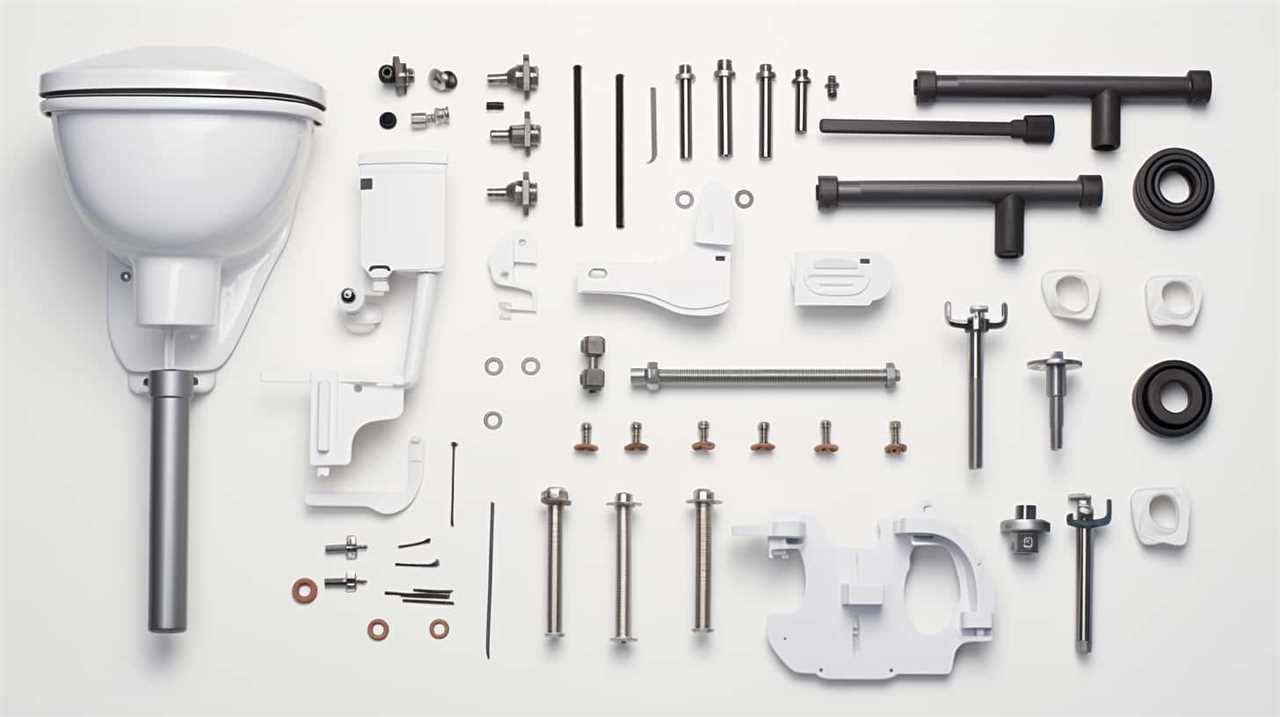
How Can a Clogged Toilet Affect the Plumbing System?
A clogged toilet can have a significant impact on the overall plumbing system. It can lead to more serious issues if not addressed promptly, such as pipe blockages, sewage backups, and potential water damage.
Can Pouring Hot Water Down the Toilet Help Unclog It?
Pouring boiling water down the toilet can sometimes help unclog it by softening the blockage. However, it’s important to avoid using excessive force, as this can cause the toilet to overflow. If the clog persists, using a snake might be necessary.
Conclusion
In conclusion, continuously flushing a clogged toilet will likely lead to an overflow due to the already blocked drain. The pressure from each flush will only push more water into the bowl, causing it to overflow.
To prevent this, it’s important to address a clogged toilet promptly and use appropriate methods to clear the blockage.
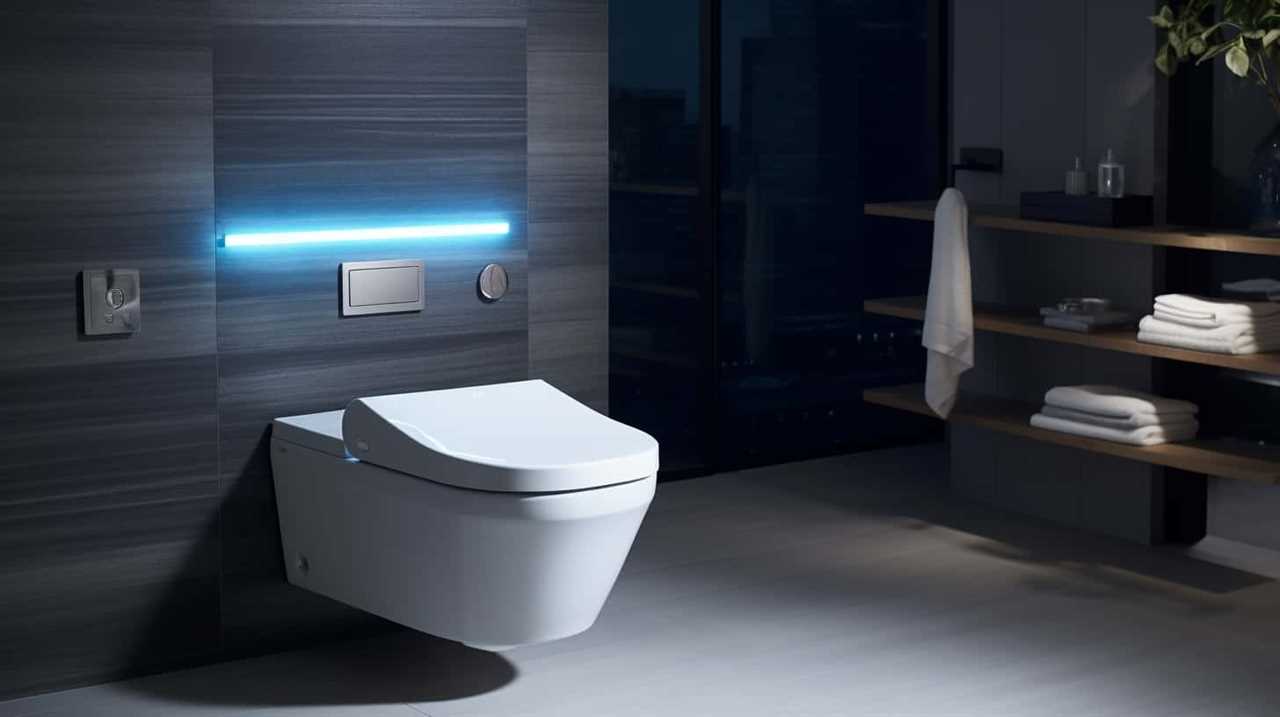
For example, in a real case study, a homeowner experienced a toilet overflow after repeatedly flushing a clog, resulting in water damage to the bathroom floor.



